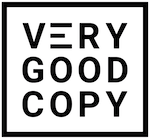Paulo Coelho wrote a beautiful book called The Alchemist.
When Tim Ferriss interviewed Coelho, he asked the author about “the most common mistake” first-time novelists make.
Never miss a VeryGoodCopy Micro-Article: SUBSCRIBE
Coelho’s answer is excellent advice for all writers:
“Trust your reader,” he said. “He or she has a lot of imagination. Don’t try to describe things. Give a hint and they will fulfill this hint with their own imagination.”
He’s referencing a writing style called Minimalism.
Minimalist authors generally favor brevity and avoid adverbs and lean on cursory descriptions of people and places and things. These guidelines, when followed together, give The Reader tremendous agency over the story: what the scene might physically look like as well as what the situation might mean.
I like how the literary scholar Robert Clark puts it: he says Minimalism lets The Reader take an “active role” in creating the narrative, in visualizing it as well as interpreting it.
(An “active role” — how engaging.)
For example…
An excerpt from Hemingway’s famous short story, Hills Like White Elephants, comes to mind. It’s remarkably sparse and, yet, at once, vivid writing:
— — —
The woman brought two glasses of beer and two felt pads. She put the felt pads and the beer glasses on the table and looked at the man and the girl. The girl was looking off at the line of hills. They were white in the sun and the country was brown and dry.
— — —
Notice how Hemingway eschews the details.
He only produces the elements that set the scene — the woman; the man; the girl; two glasses of beer; two felt pads; white; brown; dry — and then, as Coelho suggests, he trusts The Reader to imagine, to fill in the blanks and color it all in.
In other words…
He does the minimum.
And then The Reader, happily, does the rest.





